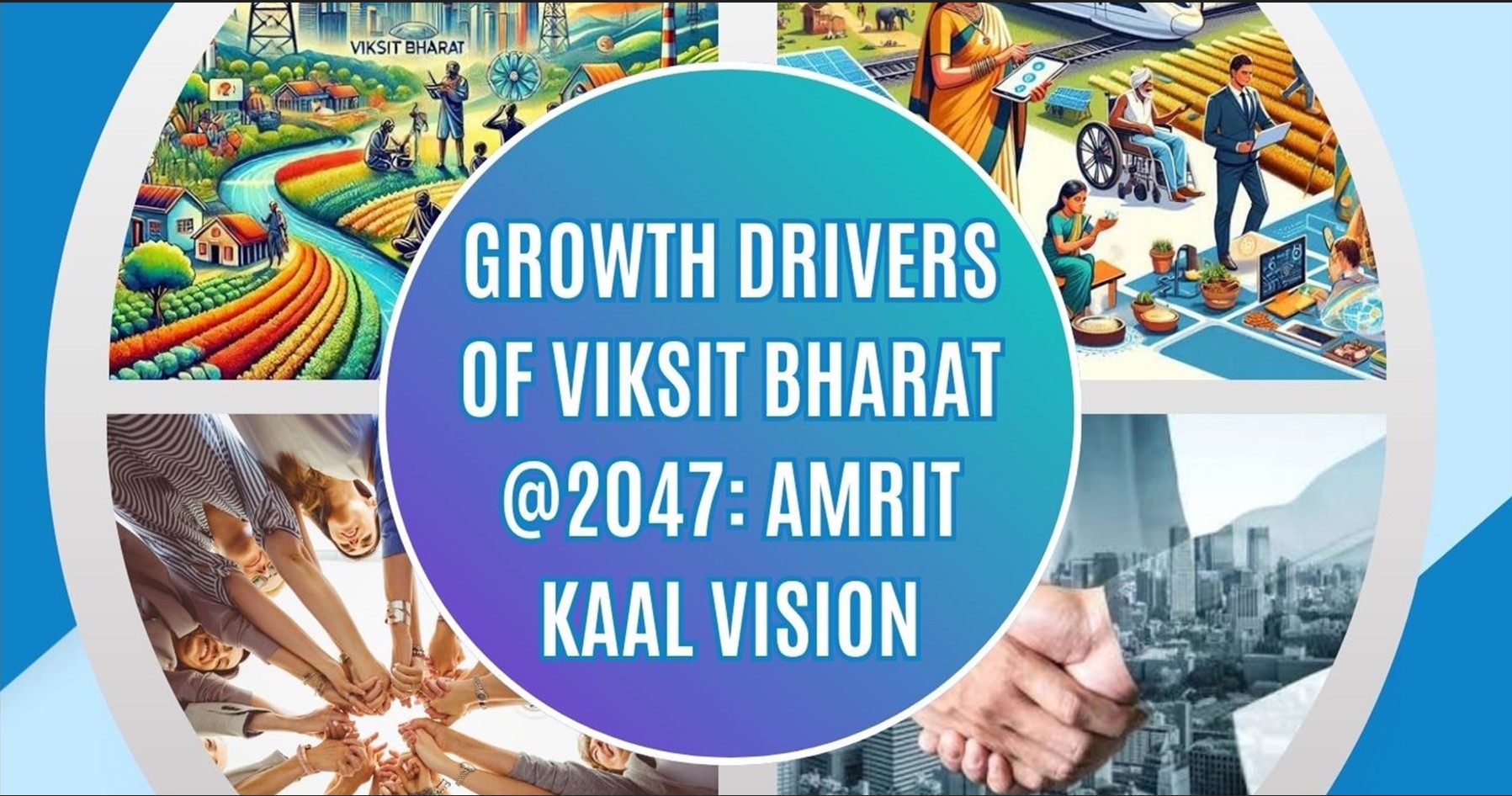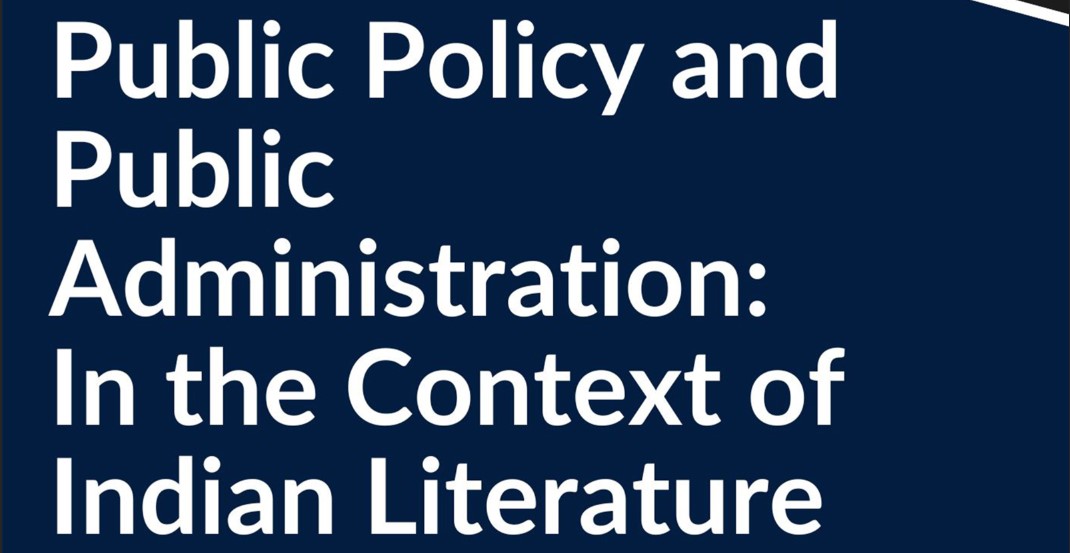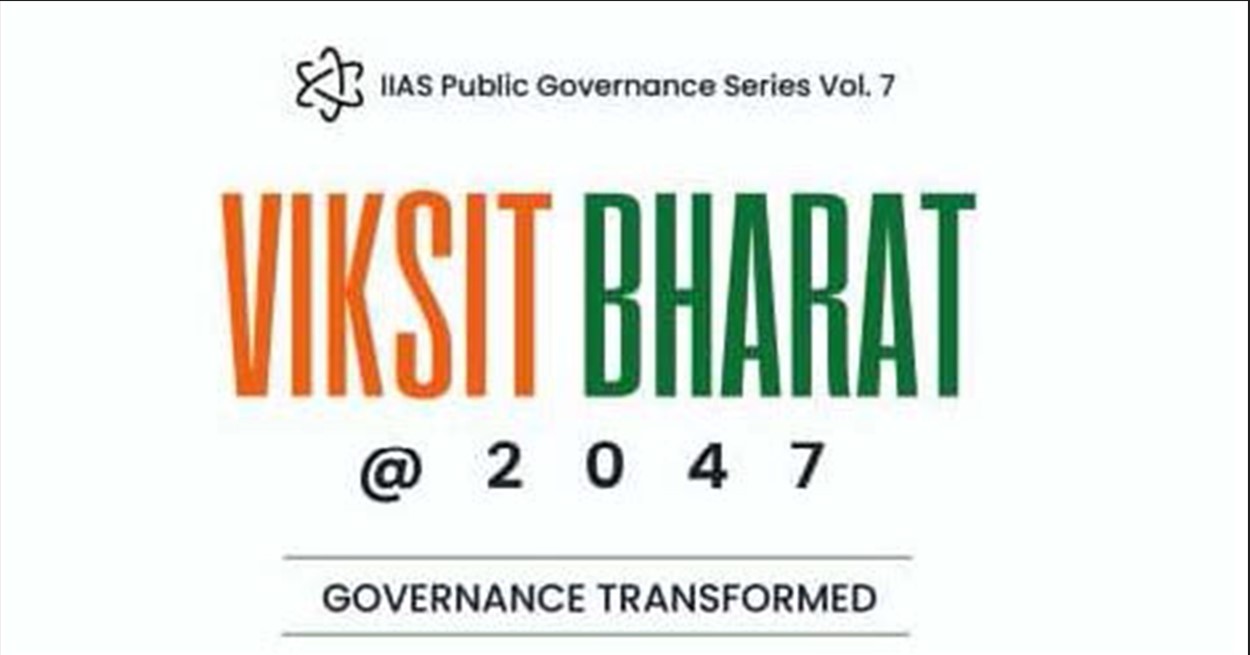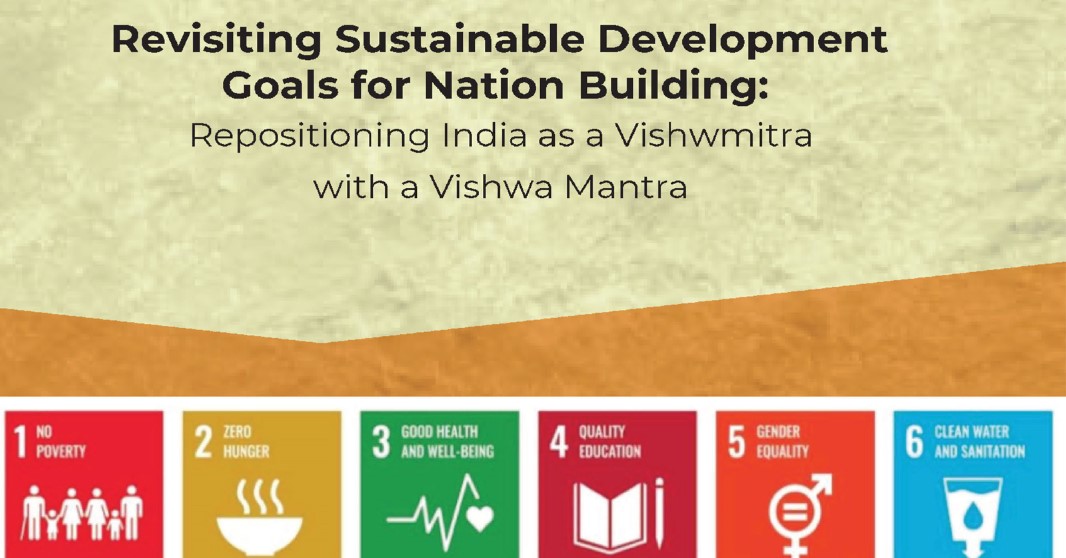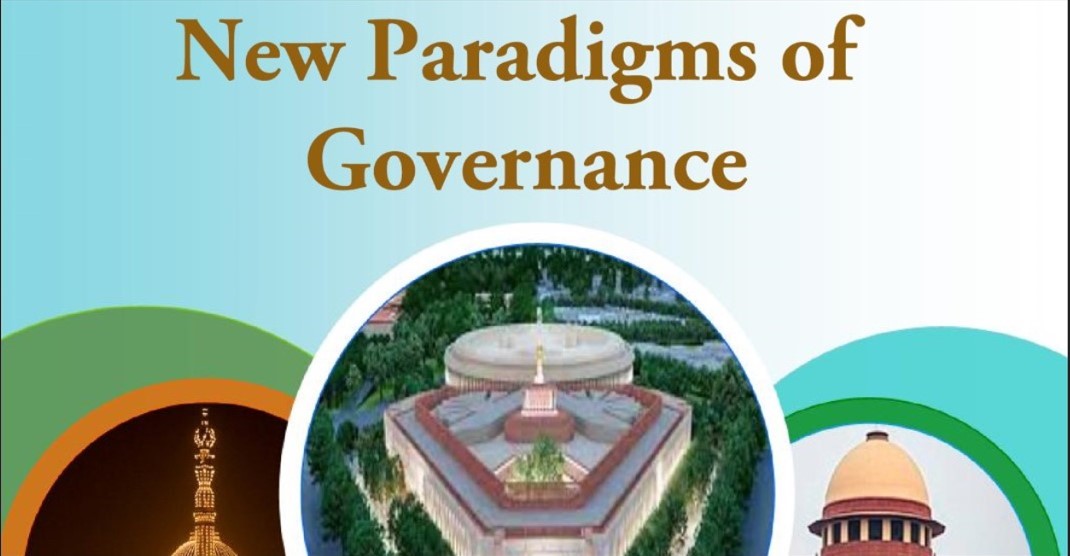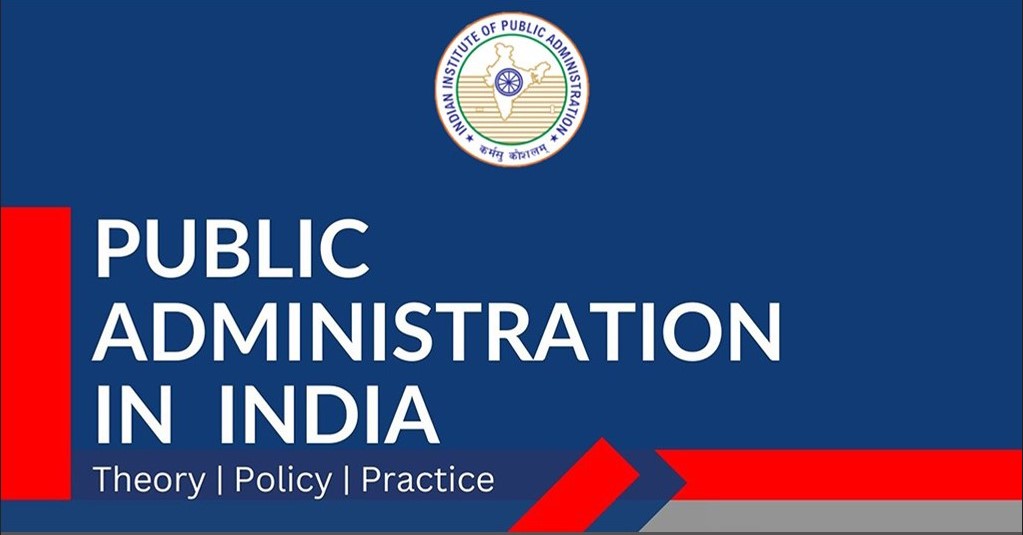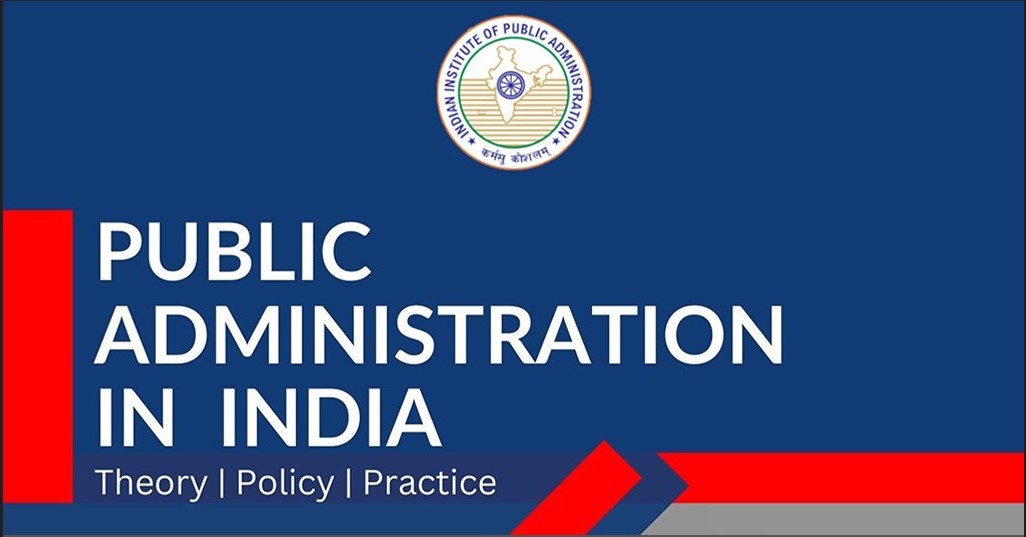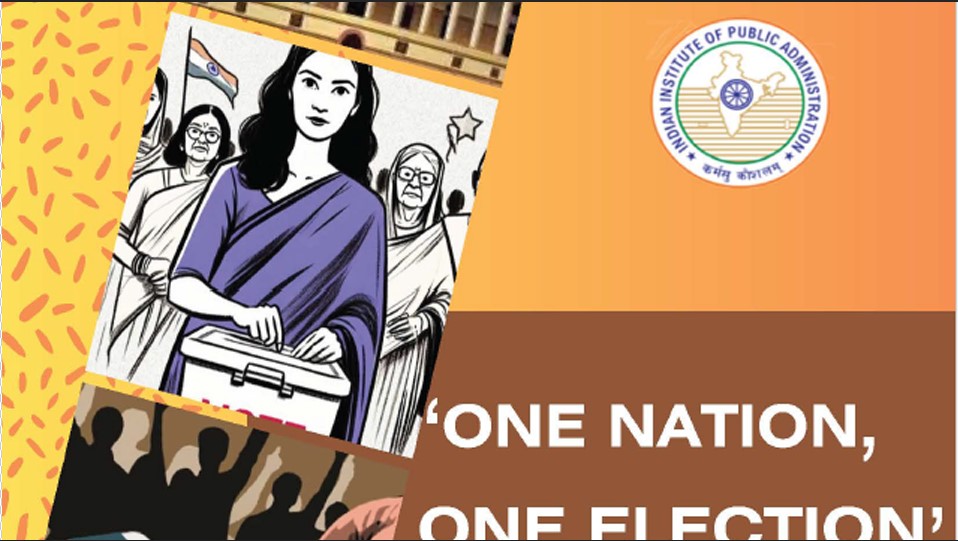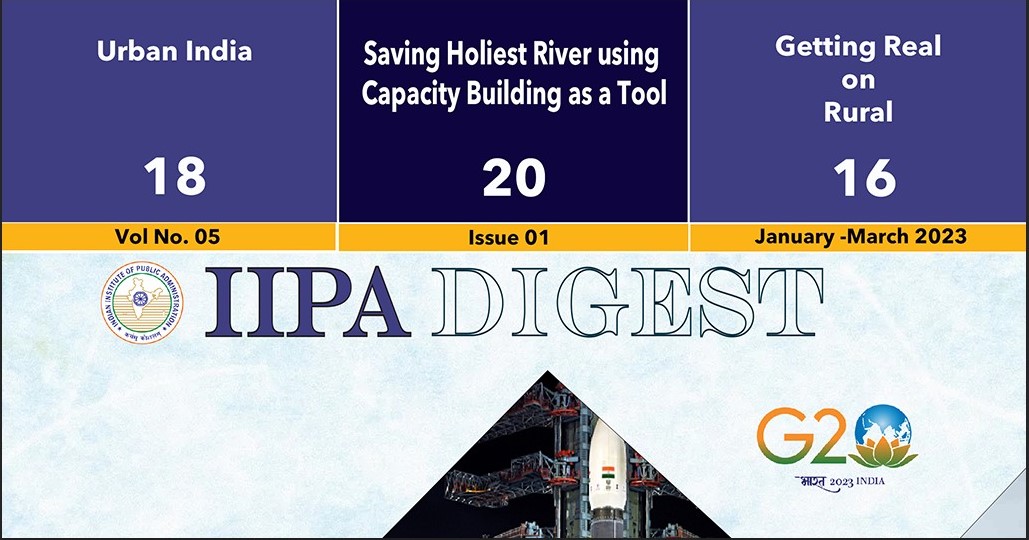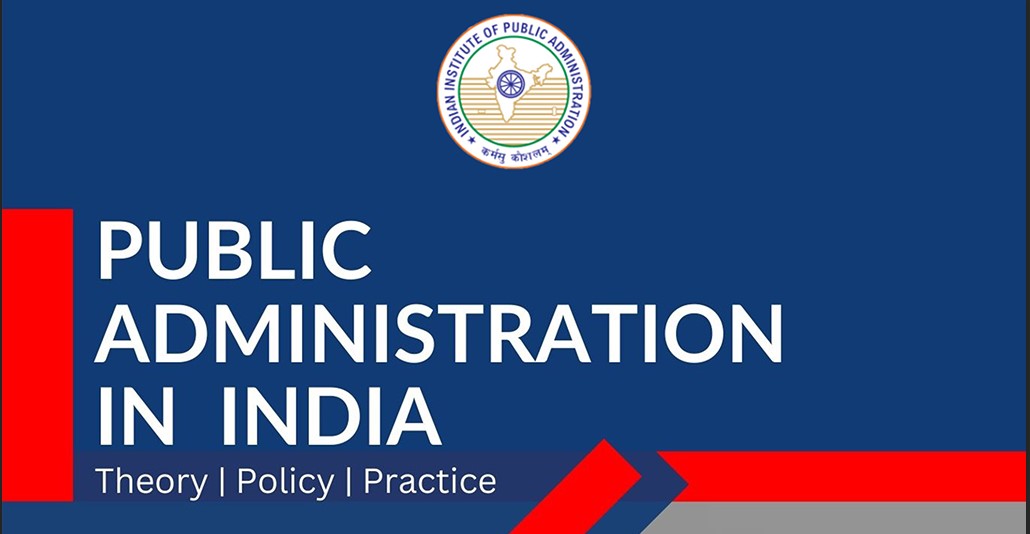E-Transportation in Tourism
Abstract
E-transportation is emerging as a game changer in the travel and tourism industry, offering sustainable mobility solutions that reduce carbon emissions while enhancing the overall travel experience. This paper explores its advantages such as smoother journeys, improved access to offbeat destinations, and eco-friendliness alongside challenges like limited charging infrastructure, high costs, range anxiety, and slow technology adoption. Despite these hurdles, government support through policies, subsidies, and public-private partnerships can accelerate the shift toward zero-emission travel. As travelers become more environmentally conscious, the integration of e-transportation with smart tourism is making travel more efficient and personalized. Future innovations in battery technology, autonomous electric vehicles, and shared mobility further strengthen its potential. E-transportation also aligns with key sustainable development goals, including SDG 9 (industry, innovation, and infrastructure) and SDG 11.2 (sustainable transport systems for all), contributing to reduced greenhouse gases and the creation of green jobs. Ultimately, the study concludes that e-vehicles have significant transformative potential for tourism while addressing urgent environmental concerns.
Keywords: E- tourism, EVs, green wheels, SDG, environment, economy, technology
1. Introduction
As per the United Nations World Tourism Organization (UNWTO), transport plays a critical role in the tourism sector, being responsible for 75% of its carbon dioxide emissions. (Phucharoen, 2024). Electric vehicles (EVs) have emerged as a promising solution to reduce greenhouse gas emissions and promote sustainable transportation in the tourism sector.
(Sandra, 2024). This approach not only prioritizes the reduction of carbon emissions but also embraces innovative methods that enhance the overall travel experience. EVs are one of the turning points of sustainable transportation, running on electricity rather than fossil fuels. As part of this evolution, electric utility vehicles and multi-passenger electric vehicles have become a transformative force. These vehicles not only enhance operational efficiency but also contribute to sustainability efforts, creating a win-win scenario for businesses and their customers. (ePowerTrucks – Electric Vehicle Specialists , 2024). Moreover, these alternatives often lead to better connectivity with sites, allowing tourists to connect with local cultures and landscapes in meaningful ways. As sustainability has high value, the adoption of eco-friendly transportation solutions is essential for the future of tourism, promising a balance between economic growth and environmental protection.
1.1 Importance of Sustainable Transportation in Tourism
Transportation is an important component of the tourism industry, influencing both a tourist's experience and the environmental impact associated with travel. Sustainable transportation refers to modes of travel that minimize harm to the environment while promoting economic and social benefits, aligning with the growing need for eco-conscious practices within the tourism sector. Implementing sustainable transportation initiatives safeguards natural resources and ensures long-term viability for destinations.
1.2 Advantages of Electric Vehicles (EVs) in Tourism
Adopting electric transportation offers numerous benefits to tourism that extend beyond mere convenience and positively impact both the environment and local communities.
i. Convenience and accessibility- It can be used through smartphone apps, helping tourists to explore any destination by clicking on the app and pinning their desired location to explore.
ii. Cost-effective exploration- Tourists can hire e-transport for a particular duration to explore any destination and pay for the time it is used. It helps them to cut down their transportation, making more economical option.
iii. Eco-friendly Travel- EVs are powered by electricity, ideally from renewable sources, offering an eco-friendly alternative to traditional fossil-fuel-powered modes of transport with zero carbon emissions. It helps in reducing carbon footprints at destinations while minimizing their environmental impact.
iv. Enhanced Mobility- EVs are the smallest and lightest, so to can explore offbeat destinations that might be challenging to reach by car or larger vehicles due to narrow lanes or restricted zones.
v. Scenic and immersive experience- Cars and buses may often provide an obstructed view of beautiful scenery as they are covered vehicles. E-Transport, like e-bikes, e-scooters, helps tourists to feel the breeze, enjoy scenic beauty with an unobstructed view.
vi. Environmental: The tourism industry is entirely dependent on the transport industry. It is a significant contributor to greenhouse gas emissions, largely due to transportation. EVs, with zero carbon emissions, help destinations reduce their carbon footprint, aligning with global efforts to combat climate change.
vii. Economic: Creation of New Business Opportunities- The growing demand for EVs in tourism has led to the rise of new businesses, including electric vehicle rental services, charging station operators, and EV tour providers. Boost to Local Economies by adopting EVs, destinations can attract tourists willing to pay a premium for eco-friendly options, contributing to local revenue streams.
viii. Tourist Experience: The silent operation of electric vehicles offers tourists panoramic views as they reduce noise pollution. Electric Vehicles (EVs) provide a quieter, less intrusive way to explore nature reserves, wildlife habitats, and cultural sites. Electric modes of transport, like e-bikes and e-boats, are silent as opposed to other conventional vehicles. These EVs do not create unwanted noise pollution, and tourists can interact more closely with their environment.
1.3 Impact of Green Wheels on Tourism
The transition to e-transportation is becoming increasingly important as societies strive to meet sustainability goals it also presents new challenges.
i. Economic Impact of E-Transportation
The economic implications of the widespread adoption of e-transportation are vast and multifaceted. As with any major technological shift, e-transportation introduces both opportunities as well as challenges for industries, governments, and consumers.
a) Reduction in Operational Costs
Lower Fuel Costs: One of the direct economic benefits of e-transportation will be the reduction in fuel costs. According to estimates, the cost of electricity for an EV is about half the price of gasoline for an internal combustion engine vehicle (Higueras, Guillen, Herrera, & Cabanillas, 2021).
Lower Maintenance Costs: Electric vehicles have fewer moving parts compared to traditional vehicles, leading to lower maintenance and repair costs. EVs do not require oil changes, and the wear on components such as brakes is due to regenerative braking systems. This can result in significant savings, which may incentivize investment in electric vehicles. (Higueras, Guillen, Herrera, & Cabanillas, 2021).
b) Job Creation and Industry Growth
Green Jobs: According to the International Energy Agency (IEA), the shift to electric vehicles could create more than 10 million jobs globally by 2030. These jobs span across research and development, manufacturing, sales, and maintenance services, as well as the installation and operation of charging stations (Lenzen, et al., 2018).
Investment in Infrastructure: As electric vehicles become more mainstream, there will be a surge in investments in charging infrastructure. Companies involved in the installation of electric vehicle charging stations, grid management, and renewable energy integration stand to benefit from this trend (Higueras, Guillen, Herrera, & Cabanillas, 2021).
c) Shift in Energy Demand and Supply
Impact on the Energy Sector: The increasing electricity demand will require investment in grid upgrades and cleaner energy sources, such as solar, wind, and hydroelectric power, to meet the growing needs of electric transportation. However, these shifts also bring challenges in managing energy supply and demand, especially during peak charging times. (Gossling, Scott, & Hall, 2020).
Diversification of Transport Business Models: Traditional transportation models are beginning to embrace electric vehicles and services, opening the door for new business models such as electric ride-sharing, electric logistics services, and "mobility as a service" (MaaS) platforms. This transformation is disrupting traditional transportation industries while providing new opportunities for start-ups and established companies to innovate.
d) Economic Costs of Transitioning to E-Transportation
High Initial Costs: Although the total cost of ownership over the lifespan of an EV is often lower than that of a gasoline-powered vehicle, the initial price remains a challenge. Government subsidies, tax credits, and rebates are helping to address this issue, but the affordability of EVs remains a critical factor for widespread adoption (Giannakis, Serghides, Dimitriou, & Zittis, 2020).
Infrastructure Development Costs: The development of extensive charging infrastructure requires large investments, which can strain both public and private finances. Although these costs are expected to decrease with technological advancements and economies of scale, the upfront financial burden of charging networks may be challenging for local governments and private operators to bear (Streimikiene, Svagzdiene, Jasinskas, & Simanavicius, 2021).
Environmental Impact of E-Transportation
The environmental benefits of e-transportation are central to its appeal as a solution to reduce global carbon emissions and combat climate change.
a) Reduction in Carbon Emissions
Lower Tailpipe Emissions: Electric vehicles produce zero tailpipe emissions, contributing to air pollution and climate change. By replacing fossil fuel-powered vehicles with EVs, e-transportation has the potential to significantly reduce the transportation sector’s carbon footprint. (United States Environmental Agency, 2024).
Global Emission Reductions: The shift toward electric transportation can have a dramatic impact on reducing global greenhouse gas (GHG) emissions. In 2013, the transportation sector was responsible for approximately 23% of global CO2 emissions, with road travel accounting for the largest share. (Lenzen, et al., 2018). The adoption of electric vehicles, when coupled with a clean energy grid, can play a pivotal role in mitigating the environmental effects of transportation.
b) Reduced Air Pollutio
Improved Air Quality: In urban areas, where air pollution from vehicles is a leading cause of health issues, the transition to electric vehicles can help reduce the levels of nitrogen oxides and particulate matter, improving air quality, benefiting both human health and the environment (Giannakis, Serghides, Dimitriou, & Zittis, 2020).
Impact on Noise Pollution: Electric vehicles are also much quieter, reducing noise pollution, particularly in urban areas, leading to a more pleasant and less stressful environment for residents and tourists alike (Higueras, Guillen, Herrera, & Cabanillas, 2021).
c) Battery Production
Battery Production Environmental Impact: The production of EV batteries remains a significant source of environmental concern. Mining for lithium, cobalt, and other raw materials used can result in environmental degradation, and the energy-intensive manufacturing process contributes to emissions. However, advancements in battery recycling technologies and the shift to more sustainable battery production methods are expected to mitigate these concerns over time. (Graver & Frey, 2016).
Energy Source Matters: The environmental benefits of EVs are maximized when the electricity powering them comes from renewable sources and not from fossil fuels, ensuring EVs remain a truly sustainable option (Gossling, Scott, & Hall, 2020).
Social Impact of E-Transportation
The social implications of e-transportation extend are by influencing issues such as public health, mobility, and equity.
a) Public Health Benefits
Improved Air Quality and Health: The shift to electric vehicles and public transportation significantly improves air quality, reducing respiratory and cardiovascular diseases. The health benefits are particularly pronounced in densely populated cities with high transportation-related pollution (Streimikiene, Svagzdiene, Jasinskas, & Simanavicius, 2021).
Reduced Noise Pollution: The quiet nature of electric vehicles reduces noise pollution, which is linked to stress, sleep disturbances, and hearing impairments, thus contributing to healthier, quieter urban environments (Gossling, Scott, & Hall, 2020).
b) Enhanced Mobility and Accessibility
Job Displacement and Re-skilling: As the electric transportation industry grows, traditional industries such as oil refining, vehicle manufacturing, and maintenance of combustion engine vehicles may require retraining and re-skilling programs to transition into the growing green economy, and minimize social disruptions (Giannakis, Serghides, Dimitriou, & Zittis, 2020).
2. Challenges in adopting zero-emission travel
The world is running towards the goal of net-zero emission travel; however, it is a complex process with lots of challenges to overcome. The implementation of sustainable transportation is facing challenges like infrastructure, investment, technological, policy, behavioral, and social factors.
i) Technological challenges:
Battery and charging technology: The limitation of current battery technology remains a significant hurdle, with issues such as range anxiety, long charging time, and high battery costs remaining the same. The lack of universal and fast-charging stations improves battery efficiency worldwide, adding to the challenges of having reliable fast-charging networks.
Hydrogen Fuel cells: The production, storage, and distribution of hydrogen is still in the nascent stage, and it is going to be an expensive and resource-intensive process (Streimikiene, Svagzdiene, Jasinskas, & Simanavicius, 2021).
Alternative Fuels in Aviation: Air transportation, the major contributor to tourism-related 12% emissions (Lenzen, et al., 2018) is exploring the use of Sustainable Aviation Fuels (SAFs), but it is currently limited due to high costs and scarcity of SAF. Also, many aircraft still rely on fossil fuels (United States Environmental Agency, 2024).
ii) Infrastructure challenge:
Charging stations: Tier one cities have access to the developing network of charging stations (16347 by March 2024 in India), while tier 2 and tier 3 cities are left behind. Expanding this infrastructure requires a significant investment in the PPP model. (Higueras, Guillen, Herrera, & Cabanillas, 2021).
Transit system and green infrastructure: Urban traffic congestion exacerbates the environmental impact. The development of an efficient transit system is crucial to reduce reliance on private vehicles. The bullet trains, the RRTS system, and numerous expressways are the best examples of this. It is essential to promote green infrastructure, such as bike lanes, pedestrian spaces, and multi-modal transport systems. (Streimikiene, Svagzdiene, Jasinskas, & Simanavicius, 2021).
iii) Economic Challenges
High initial costs: EVs are more expensive than their Internal Combustion Engine (ICE) counterparts, and the infrastructure required to support them is capital-intensive.
Financial incentives and policy support: Government incentives and subsidies can ease the financial burden of adopting sustainable travel options. The Electric Mobility Promotion Scheme (EMPS) 2024 which replaces FAME-2 with a budget of 5 billion INR, Phased Manufacturing Programme (PMP), National Mission on Transformative Mobility and Storage, EV30@30 campaign, Production Linked Incentive (PLI) scheme for Automobile and Auto components, National Electric Mobility Mission Plan (NEMMP) are some of the schemes launched by the Government of India
iv) Behavioral and social challenges:
The adoption of zero-emission travel faces significant resistance as people are not yet fully aware of the environmental impact of their travel choices, especially in terms of carbon emissions. People prioritize convenience, comfort, and cost over sustainability.
Legacy of ICE: General transportation has been built on the legacy of the manufacturing industry, which has now transplanted the ICE as a ready-to-go and reliable partner. Overcoming this ingrained culture of high-emission travel will require a significant shift in consumer behavior and values that needs time.
v) Global disparity and policy coordination:
Developing vs Developed countries: While wealthier countries are investing heavily in green infrastructure, research, and sustainable travel options, developing countries often face challenges such as limited resources, limited budget, underdeveloped infrastructure, as well as dependency on fossil fuels for economic development. This discrepancy makes it difficult for zero-emission travel to take off on a global scale. (Lenzen, et al., 2018).
3. Future trends in electronic transportation
As the world faces increasing pressure to reduce carbon emissions and mitigate climate change, the transportation sector is undergoing a transformative shift. The rise of electronic transportation-encompassing electric vehicles, electric buses, e-scooters, and even electric aviation, clearly portrays a brighter picture for a sustainable and low-carbon future.
• Electric Vehicles Adoption: EVs, as advances in battery technology will lead to electric vehicles with longer ranges and shorter charging times, solid-state batteries and next-gen lithium–ion batteries may enable EVs to surpass the range and convenience of traditional ICE vehicles. As EVs' range increases, so does the practical appeal for long-distance travel, enhancing the widespread adoption of EVs (Higueras, Guillen, Herrera, & Cabanillas, 2021).
• Decarbonization: The global push for decarbonization is driving policy changes, including stricter emissions norms, tax incentives, and subsidies for EV manufacturing and purchase.
• Charging infrastructure: Fast charging networks, such as Tesla superchargers, will continue to proliferate, making it easier for travellers to charge their vehicles on long journeys. (Streimikiene, Svagzdiene, Jasinskas, & Simanavicius, 2021).
i. Wireless charging technology: Future trends suggest the integration of wireless or inductive charging technology for electric vehicles. This would eliminate the need for physical connectors and cables, making charging more convenient, especially in public spaces, and allowing for the potential of “on-the-go” charging, such as in parking lots or along roadsides. (Gossling, Scott, & Hall, 2020).
ii. Integration with Renewable energy: The future of EV charging will be closely tied to renewable energy sources. Charging stations powered by solar panels, wind energy, and other sustainable sources will become more common, ensuring that the increased demand for electricity due to EV adoption does not contribute to higher emissions. (Higueras, Guillen, Herrera, & Cabanillas, 2021).
iii. Air transportation and Sustainable aviation: Aviation, while accounting for a smaller share of global carbon emissions (2.5%), contributes disproportionately to individual carbon footprints, especially in the tourism sector. The future of sustainable aviation looks promising, with several key trends emerging:
iv. Sustainable Aviation Fuels (SAFs): SAFs derived from renewable sources such as biomass, algae, and waste material can reduce lifecycle emissions by up to 80% compared to traditional jet fuel. As SAF production scales up and becomes more cost-effective, it will play a crucial role in decarbonizing the aviation industry. (United States Environmental Agency, 2024).
• Electric and Hybrid Aircraft: Electric and hybrid-electric aircraft are expected to become more prevalent in the coming years. Companies such as Airbus and Boeing are already working on prototypes for small, short-haul electric aircraft that could serve regional travel.(Graver & Frey, 2016).
• Urban Air Mobility (UAM): The concept of Urban Air Mobility (UAM) electric Vertical Take-off and Landing (eVTOL) aircraft for short-distance travel within urban areas is gaining traction. (Giannakis, Serghides, Dimitriou, & Zittis, 2020).
v. Electrification of Public and Shared Transport: In addition to private EV adoption, the electrification of public and shared transportation will play a pivotal role in reducing emissions.
• Electric Buses and Trams: Cities worldwide are transitioning to electric buses and trams. These vehicles produce zero emissions at the point of use, with governments investing in electric public transport fleets, especially in tourist destinations, travellers will have easy access to sustainable transportation options. (Lenzen, et al., 2018).
• Integration of Multi-Modal Transport Systems: Future transportation systems will increasingly adopt a multi-modal approach, integrating most forms of electric transport, including buses, trains, bicycles, and e-scooters. Digital platforms and apps will allow travellers to seamlessly plan and pay for multi-modal journeys, reducing the need for private car use and minimizing transportation-related emissions. (Streimikiene, Svagzdiene, Jasinskas, & Simanavicius, 2021).
vi. Smart Mobility and Autonomous Electric Vehicles
The future of electronic transportation will also see the convergence of smart mobility solutions and autonomous vehicles:
• Smart Traffic Management Systems: With the rise of electric vehicles and the increasing complexity of urban transportation systems, smart traffic management technologies will become essential. Real-time data on traffic patterns, public transport schedules, and parking availability will be integrated into navigation systems, reducing congestion and optimizing traffic flow, ultimately lowering emissions and energy use. (Gossling, Scott, & Hall, 2020).
• Autonomous Electric Vehicles (AEVs): AEVs play a significant role in reducing transportation emissions. Autonomous electric vehicles (AEVs) will be able to operate more efficiently than traditional vehicles, reducing energy consumption and emissions due to optimized routes, fewer traffic accidents, and lower energy waste. The widespread adoption of AEVs could also reduce the number of vehicles on the road, leading to less congestion and a lower carbon footprint for urban transportation. (Giannakis, Serghides, Dimitriou, & Zittis, 2020).
4. Case Study
Kerala
Kerala has introduced solar-powered electric boats, Aditya (2017) and Indra (2023), to ferry tourists in its iconic backwaters. Aditya: It is India’s first solar-powered electric boat in the state of Kerala. The boat started operating on 12 January 2017 and has been operating between Vaikkom and Thavanakkadavu. EV promotion policies have been implemented in Munnar and Kovalam to enhance sustainable tourism. The boat is operated by two 20 KW motors, creates no noise pollution, and has less vibration compared to other traditional diesel ferries. The 75-seater solar ferry won the prestigious Gustavo Trouve Award for excellence in Electric Boats and Boating for its eco-friendly operations. Indra is another, and the largest, solar-powered electric boat introduced after the successful implementation of Aditya by the Kerala State Water Transport Department. It started operating on 22nd December, 2023 in Kochi, Kerala. The boat is operated with twin 40 kWh battery packs, propelling two 25 kWh electric motors. It accommodates 100 passengers in an air-conditioned upper deck, with additional open space above the ferry. Both Aditya and Indra play significant roles in reducing carbon emissions and operational costs while promoting eco-friendly travel (State Water Transport Department, Government of Kerala, 2023; Varma, 2020).
5. Conclusion
A transitional shift towards a sustainable transportation mode, especially in the adoption of EVs and other new-age technologies, will be a big step towards an eco-friendly tourism industry. Reducing greenhouse gas emissions, improving air quality, and boosting economic growth through green jobs and infrastructure development will make EVs a multi-faceted solution to the environmental and social challenges. Despite many advantages, the journey to zero-emission travel is not without its challenges. Technological breakthroughs in battery efficiency, charging infrastructure, and alternative fuels will be key in overcoming range anxiety and cost barriers. Furthermore, collaboration between Governments, the private sector, and tourism stakeholders is important to overcome challenges and ensure the successful implementation of e-transportation solutions. In addition, the integration of renewable energy into transportation systems, investment in green infrastructure, and behavioral shifts toward sustainable travel practices are all crucial for achieving long-term sustainable goals. The future trends of electrified public transport, sustainable aviation fuels, and autonomous electric vehicles reflect the potential for transformation in sustainable transportation.
References
1. Deccan Chronicle. (n.d.). Retrieved from
https://www.deccanchronicle.com/nation/in-other-news/261116/kerala-first-solar-ferry-ride-a-success.html
2. ePowerTrucks – Electric Vehicle Specialists . (2024, August 13). How the Tourism Industry is Benefitting from the Rise in Electric Utility Vehicles. Retrieved January 21, 2025, from ePOWERTRUCKS:
https://www.epowertrucks.co.uk/how-the-tourism-industry-is-benefitting-from-the-rise-in-electric-utility-vehicles/
3. Giannakis, E., Serghides, D., Dimitriou, S., & Zittis, G. (2020). Land transport CO2 emissions and climate change: evidence from Cyprus. International Journal of Sustainable Energy, 634-647. Retrieved 2025
4. Gossling, S., Scott, D., & Hall, C. M. (2020, April 27). Pandeamics, tourism and global change: a rapid assessment of COVID-19. Journal of Sustainable Tourism, 29(1), 1-20.
5. Graver, B. M., & Frey, H. C. (2016, October 26). Highway Vehicle Emissions Avoided by Diesel Passenger Rail Service Based on Real-World Data. Urban Rail Transit, 2, 153-171.
6. Higueras, C., Guillen, A., Herrera, L., & Cabanillas, F. L. (2021). Adoption of electric vehicles: Which factors are important? . International Journal of Sustainable Transporation, 15(10), 799-813. Retrieved December 2024
7. Lenzen, M., Sun, Y., Sun, Y. Y., Faturay, F., Ting, Y. P., Geschke, A., & Malik, A. (2018, June 01). The carbon footprint of global tourism. Nature Climate Change, 8(6), 522-528. Retrieved December 2024
8. Organization, W. T. (2008). Climate Change and Tourism: Responding to Global Challenges. Madrid, Spain: World Tourism Organization.
9. Phucharoen, Y. Y. (2024). Tourism Transport-Related CO2 Emissions and Economic Growth: A Deeper Perspective from Decomposing Driving Effects. MDPI, 1.
10. Sandra. (2024, April 27). Harnessing the Potential of Electric Vehicles in Sustainable Tourism. Retrieved January 21, 2025, from LEMO Project: https://www.lemo-project.eu/harnessing-the-potential-of-electric-vehicles-in-sustainable-tourism/
11. State Water Transport Department, Government of Kerala. (2023, 11 16). State Water Transport Department. Retrieved January 27, 2025, from Government of Kerala, www.swtd.kerala.gov.in/pages-en-IN/solar-boat.php
12. Streimikiene, D., Svagzdiene, B., Jasinskas, E., & Simanavicius, A. (2021). Sustainable tourism development and competitiveness: The systematic literature review. Sustainable Development, 29(1), 259-271. Retrieved 2025
13. United States Environmental Agency. (2024, May 14). Transportation, Air Pollution, and Climate Change. Retrieved January 21, 2025, from EPA: https://www.epa.gov/transportation-air-pollution-and-climate-change/carbon-pollution-transportation
14. Varma, V. (2020, July 27). India's first solar-powered ferry, Aditya, wins global honour. Indian Express. India. Retrieved January 27, 2025, from indianexpress.com/article/india/indias-first-solar-powered-ferry-aditya-wins-gustave-trouve-award-6525729/
Leave a comment
More articles from Governance & Polity




